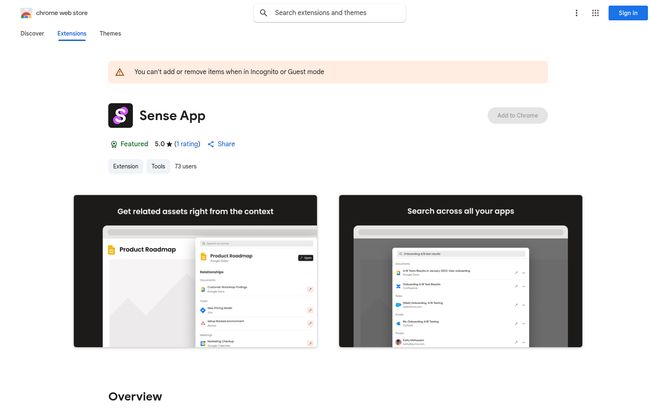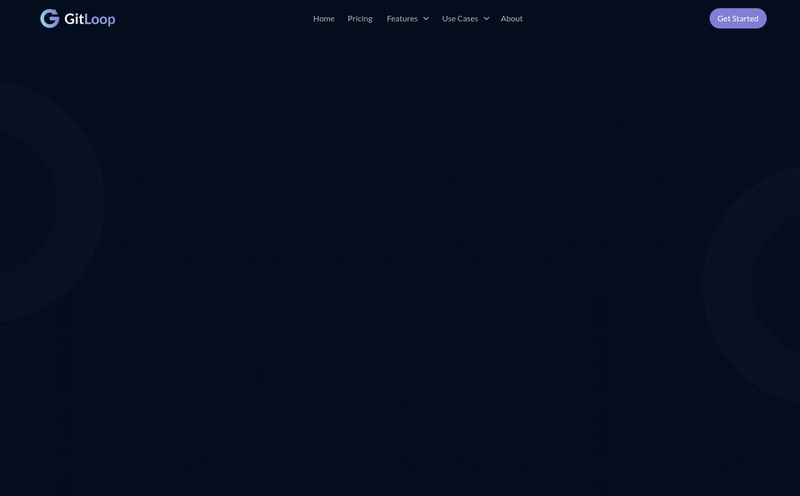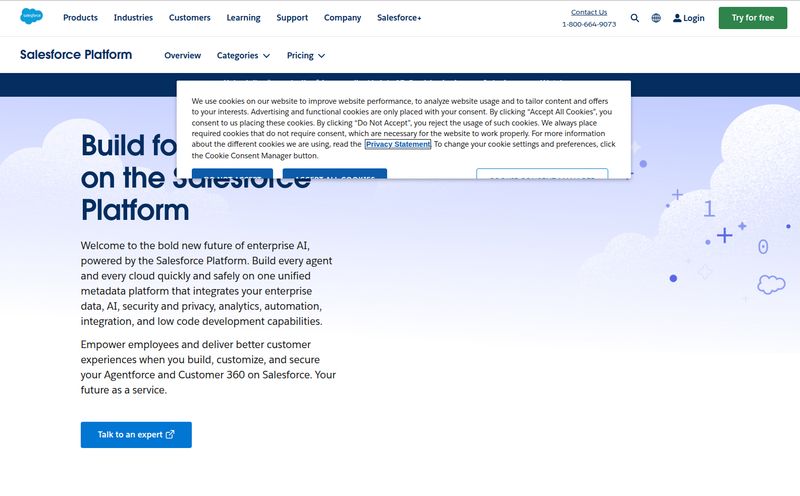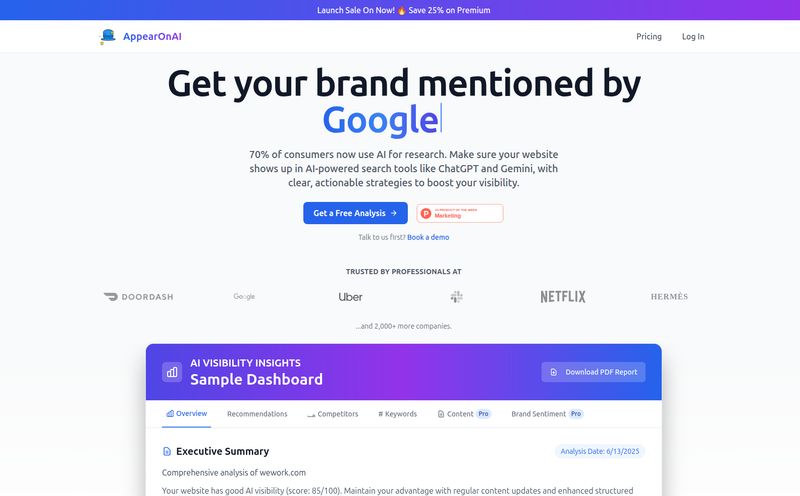Okay, let’s get something straight. If you search for "Sense," you might find a slick little Chrome extension for organizing your work tabs. That’s cool, but that's not what we're talking about today. We’re talking about the other Sense—the big, enterprise-level platform that’s trying to fix the hot mess that recruiting can sometimes be. It’s one of those classic name collisions that keeps SEO folks like me on our toes.
For years, I've watched recruiting platforms come and go. They all promise to be the silver bullet. The one tool to rule them all. Most of them are just prettier spreadsheets. But every now and then, something comes along that actually feels… different. Sense has been on my radar for a while now, and I’ve finally had the chance to really dig in. So, is it just another shiny object, or is there some real substance here? Let's get into it.
So, What Exactly is Sense?
At its heart, Sense is a talent engagement and automation platform. That's the marketing speak. In plain English? It’s a suite of tools designed to stop good candidates from ghosting you and to free up your recruiters from the mind-numbing, repetitive tasks that burn them out. Think of it less as a simple tool and more as a central nervous system for your entire hiring process.
It’s built to sit on top of your existing Applicant Tracking System (ATS), pulling data from it and then working its magic. The whole idea is to create a seamless, conversational, and honestly, a more human experience for candidates, from their first point of contact to their first day on the job. And it does this using a whole lot of AI, messaging, and smart automation. It’s especially geared towards high-volume industries like healthcare, logistics, retail, and of course, the wild world of staffing.

Visit Sense
The Features That Actually Matter
A feature list is just a list until you understand how it solves a real problem. Sense packs a lot in, but a few things really stand out to me as game-changers.
Your Own AI Recruiting Assistant
The AI Recruiter and AI Chatbot are probably the flashiest parts of the platform. Imagine a bot that can pre-screen candidates 24/7, answer their basic questions (“What are the benefits?”), and even get them scheduled for an interview without a human recruiter lifting a finger. This isn’t about replacing recruiters; it's about letting them focus on what they do best: building relationships with top-tier talent. The chatbot handles the initial grind, filtering out the noise and keeping qualified, interested people engaged. It’s like having a tireless junior recruiter who never needs a coffee break.
A Talent CRM That Gets It
Most CRMs are built for sales. They’re about leads, deals, and pipelines. Sense’s Talent CRM is purpose-built for recruiting. It helps you build and nurture talent pipelines of silver-medalist candidates—those great people you couldn't hire for one role but might be perfect for another one in six months. Instead of letting them fall into the dreaded “candidate black hole,” the system can automatically keep in touch, sending relevant job alerts or company news. It turns your talent pool from a dusty, forgotten database into a living, breathing asset.
Automation That Doesn’t Feel Robotic
Automation is a scary word for some. We’ve all gotten those horribly impersonal, obviously automated emails. Sense seems to put a lot of effort into making its automation workflows feel personal. You can set up triggers for everything: post-application thank you texts, interview reminders, onboarding document nudges, first-day check-ins. The key is that it uses channels people actually check, like SMS and WhatsApp. A quick text message feels so much more immediate and personal than another email lost in a cluttered inbox, dont you think?
My Honest Take: The Good, The Bad, and The Opaque
Alright, no tool is perfect. Let's break down where Sense shines and where you might hit a few bumps. I’ve seen enough platforms to know that the devil is always in the details.
What I’m Genuinely Excited About
The biggest pro here is the all-in-one nature of the platform. Juggling five different tools for sourcing, communication, scheduling, and analytics is a nightmare. Sense brings it all under one roof, which is a massive win for efficiency and data consistency. The mobile-first approach is also brilliant. Let’s be real, most candidates are applying and communicating from their phones. Meeting them where they are is just common sense (pun intended, I guess).
And I have to say, the potential to free up a recruiter's time is immense. I've seen teams spend hours a day just trying to schedule interviews. Automating that alone could be worth the price of admission.
The Reality Check
Now, for the not-so-great stuff. First up, the elephant in the room: pricing. You won’t find a neat little pricing page on their website. It’s all “request a demo” and custom quotes. This is pretty standard for enterprise software, but I always find it a bit frustrating. It means the price is likely substantial, and you’ll have to go through the whole sales process to even get a ballpark figure. Be prepared for a significant investment.
Second, this isn't a plug-and-play solution. Its effectiveness is directly tied to two things: a solid integration with your existing ATS and the quality of the data you feed it. As the old saying goes, garbage in, garbage out. If your current processes and data are a mess, Sense won’t magically fix them. It might even amplify the chaos. There will be a learning curve, and it'll take some real effort to get it configured just right for your team’s workflow.
Who is Sense Really For?
So, who should be booking a demo? Based on its features and complexity, Sense is definitely aimed at mid-to-large-sized organizations with a mature recruiting function. If you’re a company that hires at scale—think large retail chains, national healthcare systems, or major staffing agencies—this platform could fundamentally change your operations for the better.
If you’re a small startup and your “ATS” is a Google Sheet, this is probably overkill. You need to have an existing ATS and a team that’s ready to embrace a more structured, tech-driven approach to talent acquisition. It's a power tool, not a screwdriver. And you need a team that knows how to handle it.
Frequently Asked Questions
- What is Sense in a nutshell?
- Sense is a talent engagement platform that uses AI and automation to improve communication with candidates and streamline repetitive recruiting tasks. It integrates with your existing Applicant Tracking System (ATS).
- How does Sense improve the candidate experience?
- It focuses on a mobile-first approach using SMS and WhatsApp for quick, conversational updates. Its AI chatbot provides instant answers to candidate questions, so they're never left in the dark.
- Does Sense replace my current ATS?
- No, it's designed to work with and enhance your ATS, not replace it. It relies on the data within your ATS to power its automation and communication features. Think of it as a powerful add-on.
- How much does Sense cost?
- Sense doesn't publicly list its pricing. It operates on a custom quote basis typical for enterprise SaaS platforms. You'll need to contact their sales team for a demo and a price tailored to your company's size and needs.
- Is Sense difficult to learn?
- There can be a learning curve, especially when setting up custom automation workflows. The effectiveness of the platform depends on proper configuration, so it requires an initial investment of time to get it running optimally.
- What industries use Sense the most?
- It's particularly popular in industries with high-volume hiring needs, such as Staffing, Healthcare, Logistics, Manufacturing, and Retail.
Final Thoughts
Look, the world of recruiting is changing fast. The old “post and pray” method is dead. Candidates expect a consumer-grade experience, and recruiters are burning out faster than ever. A platform like Sense represents the direction the industry is headed: automated, intelligent, and conversational.
It's not a magic wand, and it’s not for everyone. It requires a real commitment in terms of both budget and implementation. But for the right organization, it could be the difference between being a talent magnet and constantly wondering where all the good candidates went. In an era where talent is everything, investing in the experience you provide them just makes... well, sense.



